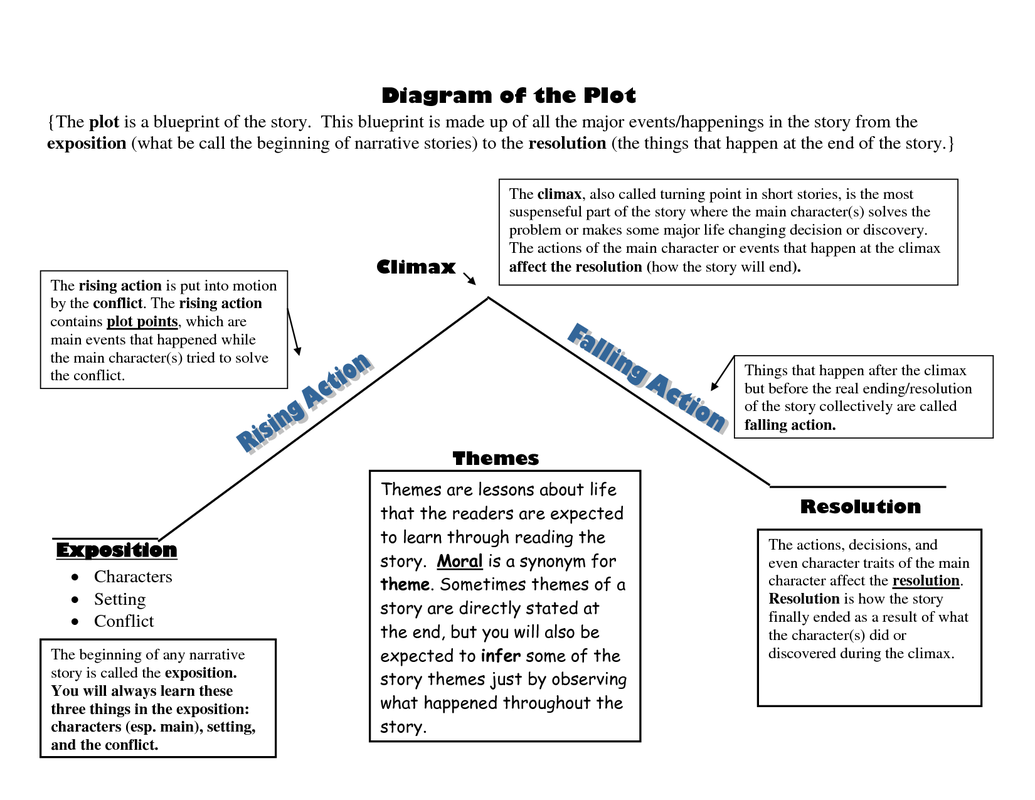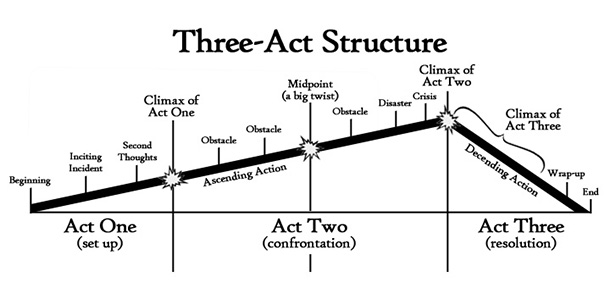Senior Directing/Playwriting
Structuring a script
Enduring Understanding: Storytelling is our business. Humans have been telling stories for as long as we have been able to communicate with each other. A story for our time needs no more complexity than the stories that have been told for tens of thousands of years. There is the setting, the characters, the conflict, the climax, and finally a resolution. Now, this is an oversimplification of the process, but you have been doing it all your life. From when you were a kindergarten student telling someone about your day or now when you describe to a group of friends some misadventure or another. We are born to tell stories and as a playwright, you can bring those stories to life in a whole new way. So, let's get your story to come alive on stage, time to write a play.
Essential Questions: Why do humans need to tell stories? How can you pay closer attention to the stories around you? What sort of plot lines do you enjoy listening/reading/watching? Why? What sort of stories do you tell? How can you tell them differently?
Students will know:
Assessments:
Activity 1 -
Using the explanation on the Thirty, one, ten page, create a script following the guidelines listed there. Share the script in process with your classmates every step of the way (See activities 2 - 4). Work in groups or partners to review and edit each others' work as you go.
Activity 2 -
Once the thirty second pitch is constructed, try to do a "mock pitch" to the instructor and a classmate. Take notes on what could be improved. effect notes you find viable. Move onto the one minute script after yo have successfully pitched it again and been approved.
Activity 3 -
Using the guidelines on the Thirty, one, ten page, Create your one minute script. Have a table read of the work with two to three classmates (table reading theirs as well in turn) and get critique notes on what is missing, or what is working.
Activity 4 -
Using the guidelines on the Thirty one, ten page, expound upon your one minute play to increase the impact of the story by telling it over a ten minute period. Table read the work, then groups will be assigned to perform it with scripts in a walk-through process. Workshops will take place, but the writer is no longer able to have control over the work as other directors and actors have been give the reigns so to speak.
Content standards:
TH:Cr3.1.HSIII
a. Refine, transform, and re-imagine a devised or scripted drama/theatre work using the rehearsal process to invent or re-imagine style, genre, form, and conventions.
TH:Cr2.1.HSIII
a. Develop and synthesize original ideas in a drama/theatre work utilizing critical analysis, historical and cultural context, research, and western or non-western theatre traditions.
b. Collaborate as a creative team to discover artistic solutions and make interpretive choices in a devised or scripted drama/theatre work.
TH:Cr1.1.HSIII
c. Integrate cultural and historical contexts with personal experiences to create a character that is believable and authentic, in a drama/theatre work.
TH:Pr6.1.HSII
a. Present a drama/theatre work using creative processes that shape the production for a specific audience.
TH:Re9.1.HSIII
a. Research and synthesize cultural and historical information related to a drama/theatre work to support or evaluate artistic choices.
b. Analyze and evaluate varied aesthetic interpretations of production elements for the same drama/theatre work.
c. Compare and debate the connection between a drama/theatre work and contemporary issues that may impact audiences.
TH:Cn11.2.HSII
a. Formulate creative choices for a devised or scripted drama/theatre work based on theatre research about the selected topic.
b. Explore how personal beliefs and biases can affect the interpretation of research data applied in drama/theatre work.
Structuring a script
Enduring Understanding: Storytelling is our business. Humans have been telling stories for as long as we have been able to communicate with each other. A story for our time needs no more complexity than the stories that have been told for tens of thousands of years. There is the setting, the characters, the conflict, the climax, and finally a resolution. Now, this is an oversimplification of the process, but you have been doing it all your life. From when you were a kindergarten student telling someone about your day or now when you describe to a group of friends some misadventure or another. We are born to tell stories and as a playwright, you can bring those stories to life in a whole new way. So, let's get your story to come alive on stage, time to write a play.
Essential Questions: Why do humans need to tell stories? How can you pay closer attention to the stories around you? What sort of plot lines do you enjoy listening/reading/watching? Why? What sort of stories do you tell? How can you tell them differently?
Students will know:
- The portions of a theatrical plot line for the purpose of writing a script.
- The history of written plays in the West
- How to flesh out an idea using creative problem solving from concept to final product
- Write a 30 second skit, a one minute play, and a ten minute play
- Understand the concept of storytelling on the page vs. on the stage
- Work together to accomplish a more solid script and final product
- Understand the playwright's craft on a new level
Assessments:
- Class participation in both critique and peer review
- Competency in grammar and basic form for the language of the script
- Writing (and meeting deadline) of three versions of a script progressively longer in length (one page - ten to 12 pages)
- Understanding of the playwriting process and a beginning to finding their own artistic voices
Activity 1 -
Using the explanation on the Thirty, one, ten page, create a script following the guidelines listed there. Share the script in process with your classmates every step of the way (See activities 2 - 4). Work in groups or partners to review and edit each others' work as you go.
Activity 2 -
Once the thirty second pitch is constructed, try to do a "mock pitch" to the instructor and a classmate. Take notes on what could be improved. effect notes you find viable. Move onto the one minute script after yo have successfully pitched it again and been approved.
Activity 3 -
Using the guidelines on the Thirty, one, ten page, Create your one minute script. Have a table read of the work with two to three classmates (table reading theirs as well in turn) and get critique notes on what is missing, or what is working.
Activity 4 -
Using the guidelines on the Thirty one, ten page, expound upon your one minute play to increase the impact of the story by telling it over a ten minute period. Table read the work, then groups will be assigned to perform it with scripts in a walk-through process. Workshops will take place, but the writer is no longer able to have control over the work as other directors and actors have been give the reigns so to speak.
Content standards:
TH:Cr3.1.HSIII
a. Refine, transform, and re-imagine a devised or scripted drama/theatre work using the rehearsal process to invent or re-imagine style, genre, form, and conventions.
TH:Cr2.1.HSIII
a. Develop and synthesize original ideas in a drama/theatre work utilizing critical analysis, historical and cultural context, research, and western or non-western theatre traditions.
b. Collaborate as a creative team to discover artistic solutions and make interpretive choices in a devised or scripted drama/theatre work.
TH:Cr1.1.HSIII
c. Integrate cultural and historical contexts with personal experiences to create a character that is believable and authentic, in a drama/theatre work.
TH:Pr6.1.HSII
a. Present a drama/theatre work using creative processes that shape the production for a specific audience.
TH:Re9.1.HSIII
a. Research and synthesize cultural and historical information related to a drama/theatre work to support or evaluate artistic choices.
b. Analyze and evaluate varied aesthetic interpretations of production elements for the same drama/theatre work.
c. Compare and debate the connection between a drama/theatre work and contemporary issues that may impact audiences.
TH:Cn11.2.HSII
a. Formulate creative choices for a devised or scripted drama/theatre work based on theatre research about the selected topic.
b. Explore how personal beliefs and biases can affect the interpretation of research data applied in drama/theatre work.


